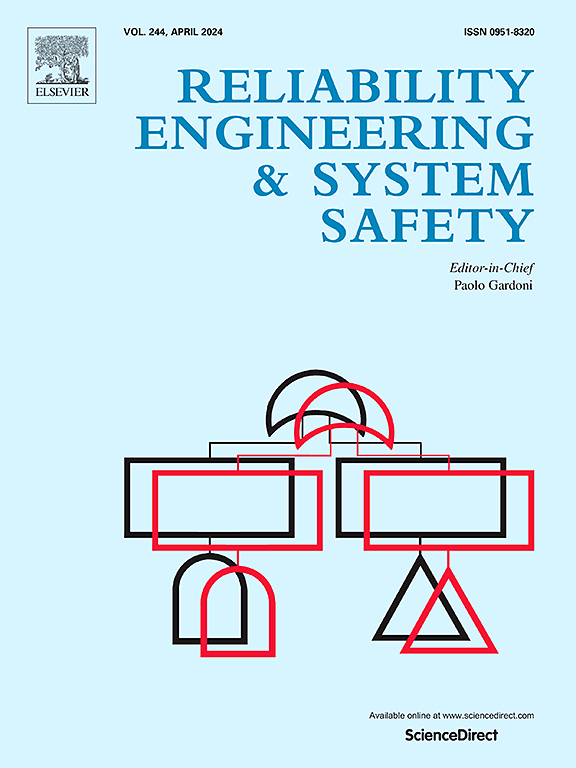Diffusion model-assisted cross-domain fault diagnosis for rotating machinery under limited data
IF 11
1区 工程技术
Q1 ENGINEERING, INDUSTRIAL
引用次数: 0
Abstract
In industrial scenarios, cross-domain fault diagnosis faces the challenge of data scarcity due to the difficulty of data acquisition and the high cost of labeling. To overcome this issue, this paper proposes a diffusion model-assisted data generation method to enhance the model’s cross-domain diagnostic capability by generating target domain data. Specifically, this paper establishes a diffusion model-assisted cross-domain fault diagnosis method, where a diffusion model is first constructed to augment the target domain data, and then a deep learning model is jointly trained using source domain data, a small amount of target domain data, and the generated target domain data to learn and transfer diagnostic knowledge. To align the global feature distributions, the maximum mean discrepancy loss is first employed to align the source domain data with both the target domain data and the generated target domain data. Additionally, a cross-domain triplet loss is established to achieve category alignment and separation, ensuring similar categories are aligned while different categories are distinguished. Finally, the deep consistency regularization is designed to enforce consistency across target domain data and its augmented versions, enhancing the model’s robustness. Extensive experiments on two rotating machinery systems demonstrate the effectiveness of the proposed method in addressing limited-data cross-domain fault diagnosis, highlighting its potential for practical applications in intelligent health monitoring of rotating machinery.
有限数据下的扩散模型辅助旋转机械跨域故障诊断
在工业场景下,由于数据采集困难、标注成本高,跨域故障诊断面临数据稀缺性的挑战。为了克服这一问题,本文提出了一种扩散模型辅助数据生成方法,通过生成目标域数据来增强模型的跨域诊断能力。具体而言,本文建立了扩散模型辅助的跨域故障诊断方法,该方法首先构建扩散模型对目标域数据进行扩充,然后利用源域数据、少量目标域数据以及生成的目标域数据共同训练深度学习模型,学习和传递诊断知识。为了对齐全局特征分布,首先使用最大平均差异损失来对齐源域数据与目标域数据以及生成的目标域数据。此外,建立跨域三联体损失,实现类别对齐和分离,确保相似类别对齐,不同类别区分。最后,设计深度一致性正则化来增强目标域数据及其增强版本之间的一致性,增强模型的鲁棒性。在两个旋转机械系统上的大量实验证明了该方法在解决有限数据跨域故障诊断方面的有效性,突出了其在旋转机械智能健康监测中的实际应用潜力。
本文章由计算机程序翻译,如有差异,请以英文原文为准。
求助全文
约1分钟内获得全文
求助全文
来源期刊

Reliability Engineering & System Safety
管理科学-工程:工业
CiteScore
15.20
自引率
39.50%
发文量
621
审稿时长
67 days
期刊介绍:
Elsevier publishes Reliability Engineering & System Safety in association with the European Safety and Reliability Association and the Safety Engineering and Risk Analysis Division. The international journal is devoted to developing and applying methods to enhance the safety and reliability of complex technological systems, like nuclear power plants, chemical plants, hazardous waste facilities, space systems, offshore and maritime systems, transportation systems, constructed infrastructure, and manufacturing plants. The journal normally publishes only articles that involve the analysis of substantive problems related to the reliability of complex systems or present techniques and/or theoretical results that have a discernable relationship to the solution of such problems. An important aim is to balance academic material and practical applications.
 求助内容:
求助内容: 应助结果提醒方式:
应助结果提醒方式:


